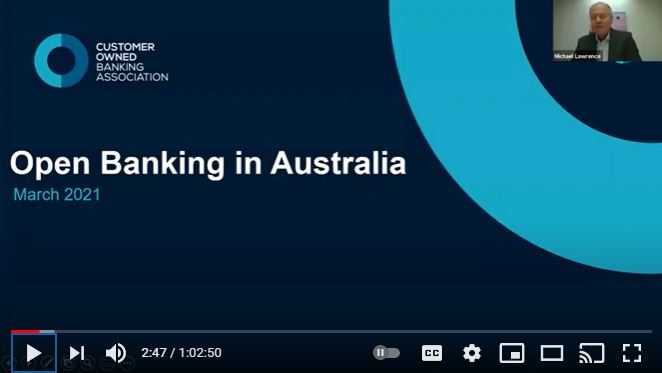Australia: Setting the Pace on Open Banking
2021-04-01Ready or not, credit unions down under are already preparing for the cost, compliance and cybersecurity issues that open banking poses, due to an aggressive approach from Australia’s federal government.
Michael Lawrence, CEO of the Customer Owned Banking Association (COBA), showed a global credit union audience just how far ahead Australia is on open banking—especially when compared to other countries—during a recent World Council webinar on the subject.
“In November 2017, the Australian Government announced the Consumer Data Right (CDR) here in Australia, giving consumers more access to and control over their data—which traditionally had always sat inside banking institutions, and had really been at the discretion of the banking institution as opposed to being at the control of the individual customer,” said Lawrence, who also serves as Treasurer of World Council’s Board of Directors.
CDR is the Australian term for open banking—a new technological and regulatory movement that gives consumers the power to securely share their selected banking data with accredited third parties. In practical terms, that means consumers will have the ability to use online services or mobile apps to notify them when bills are due, set up automated payments—even move money between accounts at different financial institutions.
The Australian Government believes the CDR will encourage and increase competition. That is why they have already begun to implement it, while other countries lag far behind. Canada’s government and credit union movement are both still studying how to approach open banking, with implementation still more than a year away. In the United States, neither the government nor the credit union movement has even begun to plan for a future with open banking.
Speed brings concerns
The pace at which the Australian government is moving on open banking is a cause of concern for credit unions.
“It is being pushed through with quite an amount of speed, which can be problematic, because this is an enormously complex area,” said Lawrence. “The CDR rules have been changing amid implementation and that’s been causing an enormous amount of angst, an enormous amount of work for our members, and there’s been real mismatch between the rule changes and the related changes to technical standards.”
COBA is comprised of 62 customer-owned banks (credit unions), which together make up the fifth largest holder of deposit accounts in Australia. But individually, each credit union has far fewer resources at its disposal than the largest banks have to prepare for this new reality that puts financial institutions in more direct competition with fintechs and neobanks.
Still, Lawrence says it is not all doom and gloom for credit unions.
“Rather than compete on price, our organizations will focus on building a deeper understanding of their member, their demographics, their geography, and allowing them to compete on the closeness of their relationship and the personal experience of banking within this digital world,” said Lawrence.
While many of Australia’s big banks have already gone live with product data-sharing, credit unions are still in the implementation phase and will not know the competitive impacts of open banking for some time.
“But I think the early adopters, those that are investing in it—not only from a compliance perspective, but from an innovation perspective—are going to be in a better position in terms of building that competitive nature and actually taking some market share,” said Lawrence.
Michael Lawrence’s remarks were taken from Open Banking: The Challenges and Opportunities Facing Credit Unions, a March 2021 World Council webinar that also featured presentations from executives with the Canadian Credit Union Association (CCUA) and Credit Union National Association (CUNA) in the United States. All three organizations are direct members of World Council.

